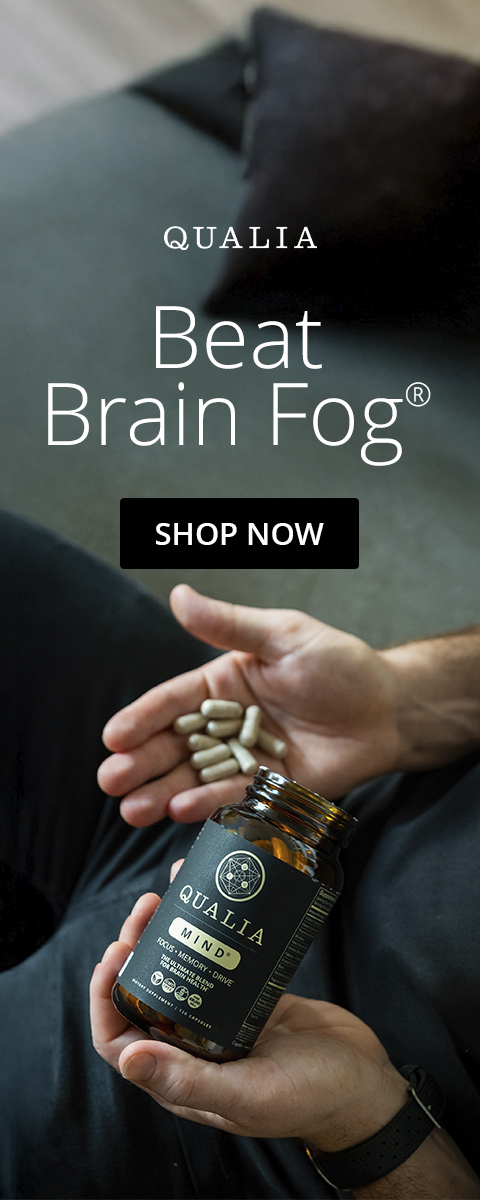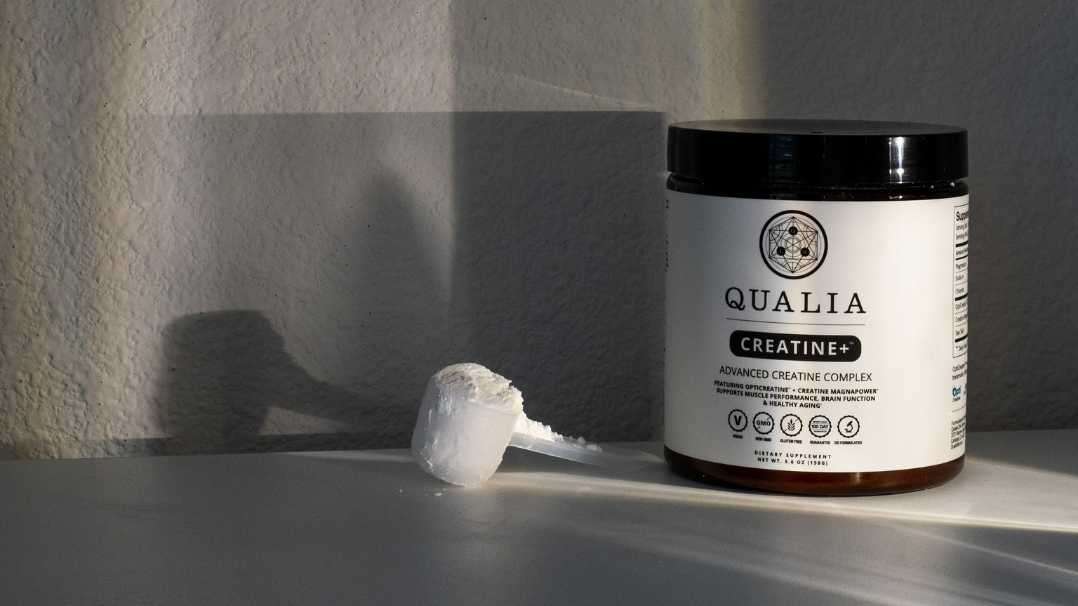Many of us spend too much time sitting at desks, in cars, or on couches. This sedentary lifestyle can take a toll on your health and accelerate physical and cognitive deterioration as you age [1–4]. The best antidote to sedentarism is, obviously, moving your body: breaking up your sitting time with some form of exercise, even just 1 min of squats, is an effective way to help you maintain your health.
Being physically active is one of the most essential habits for your health and well-being. One of the simplest and most underestimated ways to incorporate physical activity into your day is by going for walks. Walking is easy and accessible: it doesn’t require any special equipment, classes, or even much planning, really—all you need is comfortable shoes and any bit of time you can find.
Walking gets your muscles working and your blood flowing faster and allows you to reap the benefits of physical activity—from promoting cardiovascular, metabolic, and musculoskeletal health to supporting mental health, cognitive function, quality of life, and even a longer healthspan [5–8].
Walking Capacity and Gait Speed Reflect Biological Aging
How fast you can walk speaks volumes about how healthy you are: walking speed reflects the health of the musculoskeletal, visual, and nervous systems, as well as your cardiorespiratory fitness and metabolic health [9,10]. Reduced gait speed is regarded as a sign of biological aging as it is associated with poorer physical performance, cognitive function, and general health [11–13].
Walking speed is actually an indicator of longevity in older age: a 2011 study published in the Journal of the American Medical Association (JAMA) that analyzed data from several studies with older adults showed that the faster you're able to walk as you age, the longer you're likely to live [14].
But it’s not only in older age that your walking capacity and gait speed are important. An article published in 2019 in JAMA Network Open showed that gait speed may be an important indicator of physical and cognitive health and your rate of biological aging even in midlife [15].
This article shared results of the Dunedin Multidisciplinary Health and Development Study, an ongoing longitudinal study of health and behavior that started over 50 years ago, in 1972. The Denedin study has been following a cohort of 1037 individuals since birth and assessing their health every few years. Participants have now hit midlife, and the 2019 publication (which included 904 of the initial participants) shared some important observations about their physical and cognitive health at 45 years old.
The study found that slower gait speed at age 45 was associated with physical and biological indicators of accelerated aging, including brain aging. Adults with slower gait speed had poorer physical performance, grip strength, balance, and visual-motor coordination; they also showed signs of accelerated biological aging across multiple organ systems, older facial appearance, poorer neurocognitive functioning, and compromised structural brain integrity, including smaller brain volume, thinning of the cerebral cortex, and more white matter lesions [15].
Naturally, being able to walk fast can be a consequence of being healthy. But it is certainly also a cause since walking brings several benefits that can promote physical and cognitive health and longevity.
Walking Changes Your Brain
One of the reasons physical inactivity affects cognition is by having an impact on cerebral blood flow, metabolism, and oxygenation, which are essential for cognitive performance and long-term cognitive health as we age [1,16–18]. Walking is a great way to stimulate cerebral blood flow and metabolism and thereby minimize the impact of sedentarism on cognitive health.
Moreover, choosing a natural setting for your walk can amplify the benefits, as the exposure to the outdoors provides additional restorative effects for cerebral blood flow and a healthy, clear brain.
A 2022 study published in JAMA Neurology that monitored 78,430 adults aged 40 to 79 years for about 7 years assessed how walking influenced cognitive health in the long term [19]. The participants wore a wrist accelerometer to monitor their walking activities under free-living conditions. Results showed that the number of steps accumulated in a day and the cadence of walking could impact cognitive health in the long term: walking more steps per day and walking at a higher rhythm was associated with better cognitive health at the end of the study (after about 7 years).
The best outcomes were observed for approximately 9800 steps per day and a speed of 112 steps per minute. Data also showed that the minimum number of steps to get any long-term benefits for cognitive health was approximately 3800 steps per day [19].
A particularly relevant benefit of walking is the support of healthy brain structure as we age. Loss of brain volume is one of the main consequences of aging. The hippocampus, which has a key role in memory and other aspects of cognitive function, is one of the structures most affected by age-related volume loss.
A study published in 2011 in the Proceedings of the National Academy of Sciences of the USA (PNAS) reported that individuals aged 55 to 80 who walked for 40 minutes three times a week over one year had improved memory and a 2% increase in the volume of the hippocampus. On the other hand, the control group, who did only stretching exercises throughout that year, exhibited a 1.4% decrease in hippocampal volume [20]. The 2% increase in hippocampal volume in the individuals who walked routinely corresponded to reversing age-related losses by 1 to 2 years. The positive structural changes observed in the hippocampus are a clear sign of the brain’s ability to adapt and rewire itself. Regular physical activity, like walking, is one of the most powerful ways to promote neuroplasticity and build a more resilient brain."
Walking Boosts Longevity
In addition to promoting cognitive health, walking has several other benefits that promote healthy aging. Walking and other forms of low-intensity physical activity promote cardiovascular and cerebrovascular health, cardiopulmonary function, metabolic health, immune function, cognitive function, mental well-being, and sleep; walking can even impact molecular and cellular mechanisms of aging. All of these actions contribute to longevity [21].
A great example of the benefits of walking and being physically active into old age is found in the Blue Zones, the regions of the world where people live particularly long and healthy lives. One of the main lifestyle characteristics of Blue Zone populations is their high levels of physical activity as part of their daily routine, including regular walking to work or for running errands and other low-intensity physical activities, such as gardening. This is believed to contribute to their outstanding longevity [22,23].
Conclusion
Making walking a part of your habits and daily routines can be a very simple and effective strategy to support your well-being and promote health in the long term. Walking briskly for 30 min per day, 5 days a week, is enough to help delay age-related health deterioration and promote healthy aging [21].
To complement these habits, supporting the energy factories within your cells—your mitochondria—is key. Mitochondrial health is foundational to the physical and cognitive benefits of walking and healthy aging overall.
In addition to physical activity, dietary supplements can be another helpful strategy to promote healthy aging by supporting healthy cell and tissue function.*
NAD+ is a key molecule for cellular energy production and cellular health. NAD+ levels decrease as we age, which contributes to poorer health [24]. Qualia NAD+ was developed to support NAD+ maintenance by providing several substrates for NAD+ biosynthesis and supporting rate-limiting steps in the different pathways of NAD+ production.* You can learn more about it in The Formulator's View of the Qualia NAD+ Ingredients.
*These statements have not been evaluated by the Food and Drug Administration. This product is not intended to diagnose, treat, cure, or prevent any disease.
References
[1]R.S. Falck, J.C. Davis, T. Liu-Ambrose, Br. J. Sports Med. 51 (2017) 800–811.
[2]X.-Y. Cai, G.-P. Qian, F. Wang, M.-Y. Zhang, Y.-J. Da, J.-H. Liang, Front. Neurosci. 17 (2023) 1221990.
[3]L.F.M. de Rezende, J.P. Rey-López, V.K.R. Matsudo, O. do Carmo Luiz, BMC Public Health 14 (2014) 333.
[4]E.A. Silveira, C.R. Mendonça, F.M. Delpino, G.V. Elias Souza, L. Pereira de Souza Rosa, C. de Oliveira, M. Noll, Clin. Nutr. ESPEN 50 (2022) 63–73.
[5]M. Izquierdo, R.A. Merchant, J.E. Morley, S.D. Anker, I. Aprahamian, H. Arai, M. Aubertin-Leheudre, R. Bernabei, E.L. Cadore, M. Cesari, L.-K. Chen, P. de Souto Barreto, G. Duque, L. Ferrucci, R.A. Fielding, A. García-Hermoso, L.M. Gutiérrez-Robledo, S.D.R. Harridge, B. Kirk, S. Kritchevsky, F. Landi, N. Lazarus, F.C. Martin, E. Marzetti, M. Pahor, R. Ramírez-Vélez, L. Rodriguez-Mañas, Y. Rolland, J.G. Ruiz, O. Theou, D.T. Villareal, D.L. Waters, C. Won Won, J. Woo, B. Vellas, M. Fiatarone Singh, J. Nutr. Health Aging 25 (2021) 824–853.
[6]M. Zhao, S.P. Veeranki, C.G. Magnussen, B. Xi, BMJ 370 (2020) m2031.
[7]B.K. Pedersen, B. Saltin, Scand. J. Med. Sci. Sports 25 Suppl 3 (2015) 1–72.
[8]D. Stensvold, H. Viken, S.L. Steinshamn, H. Dalen, A. Støylen, J.P. Loennechen, L.S. Reitlo, N. Zisko, F.H. Bækkerud, A.R. Tari, S.B. Sandbakk, T. Carlsen, J.E. Ingebrigtsen, S. Lydersen, E. Mattsson, S.A. Anderssen, M.A. Fiatarone Singh, J.S. Coombes, E. Skogvoll, L.J. Vatten, J.L. Helbostad, Ø. Rognmo, U. Wisløff, BMJ 371 (2020) m3485.
[9]S. Fritz, M. Lusardi, J. Geriatr. Phys. Ther. 32 (2009) 2–5.
[10]N.M. Peel, S.S. Kuys, K. Klein, J. Gerontol. A Biol. Sci. Med. Sci. 68 (2013) 39–46.
[11]R.W. Bohannon, A. Williams Andrews, Physiotherapy 97 (2011) 182–189.
[12]N.M. Peel, L.J. Alapatt, L.V. Jones, R.E. Hubbard, J. Gerontol. A Biol. Sci. Med. Sci. 74 (2019) 943–948.
[13]J. Dumurgier, A. Elbaz, P. Ducimetière, B. Tavernier, A. Alpérovitch, C. Tzourio, BMJ 339 (2009) b4460.
[14]S. Studenski, S. Perera, K. Patel, C. Rosano, K. Faulkner, M. Inzitari, J. Brach, J. Chandler, P. Cawthon, E.B. Connor, M. Nevitt, M. Visser, S. Kritchevsky, S. Badinelli, T. Harris, A.B. Newman, J. Cauley, L. Ferrucci, J. Guralnik, JAMA 305 (2011) 50–58.
[15]L.J.H. Rasmussen, A. Caspi, A. Ambler, J.M. Broadbent, H.J. Cohen, T. d’Arbeloff, M. Elliott, R.J. Hancox, H. Harrington, S. Hogan, R. Houts, D. Ireland, A.R. Knodt, K. Meredith-Jones, M.C. Morey, L. Morrison, R. Poulton, S. Ramrakha, L. Richmond-Rakerd, M.L. Sison, K. Sneddon, W.M. Thomson, A.R. Hariri, T.E. Moffitt, JAMA Netw. Open 2 (2019) e1913123.
[16]L. Stoner, Q. Willey, W.S. Evans, K. Burnet, D.P. Credeur, S. Fryer, E.D. Hanson, Psychophysiology 56 (2019) e13457.
[17]S.E. Carter, R. Draijer, S.M. Holder, L. Brown, D.H.J. Thijssen, N.D. Hopkins, J. Appl. Physiol. 125 (2018) 790–798.
[18]B. Sperlich, I. De Clerck, C. Zinner, H.-C. Holmberg, B. Wallmann-Sperlich, Front. Physiol. 9 (2018) 1279.
[19]B. Del Pozo Cruz, M. Ahmadi, S.L. Naismith, E. Stamatakis, JAMA Neurol. 79 (2022) 1059–1063.
[20]K.I. Erickson, M.W. Voss, R.S. Prakash, C. Basak, A. Szabo, L. Chaddock, J.S. Kim, S. Heo, H. Alves, S.M. White, T.R. Wojcicki, E. Mailey, V.J. Vieira, S.A. Martin, B.D. Pence, J.A. Woods, E. McAuley, A.F. Kramer, Proc. Natl. Acad. Sci. U. S. A. 108 (2011) 3017–3022.
[21]Z. Ungvari, V. Fazekas-Pongor, A. Csiszar, S.K. Kunutsor, GeroScience 45 (2023) 3211–3239.
[22]D. Buettner, S. Skemp, Am. J. Lifestyle Med. 10 (2016) 318–321.
[23]M. Poulain, A. Herm, A. Errigo, C. Chrysohoou, R. Legrand, G. Passarino, M.A. Stazi, K.G. Voutekatis, E.S. Gonos, C. Franceschi, G.M. Pes, Mech. Ageing Dev. 198 (2021) 111543.
[24]A.J. Covarrubias, R. Perrone, A. Grozio, E. Verdin, Nat. Rev. Mol. Cell Biol. 22 (2021) 119–141.








No Comments Yet
Sign in or Register to Comment